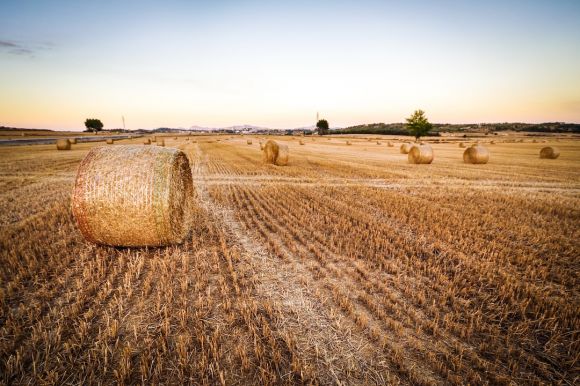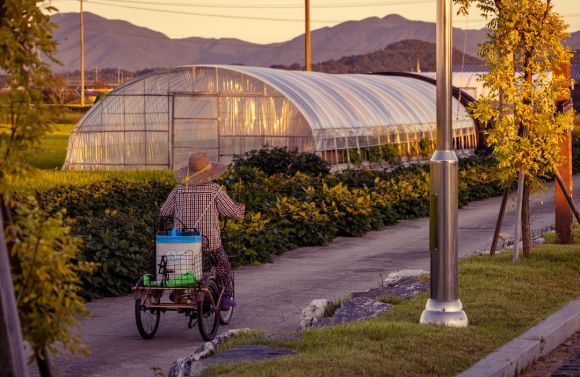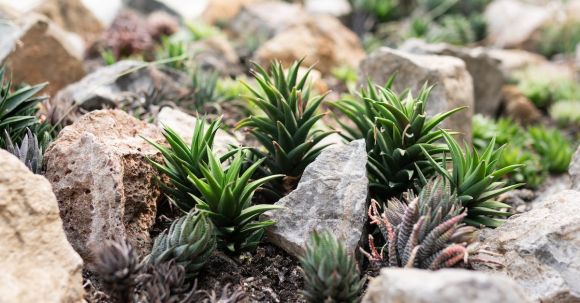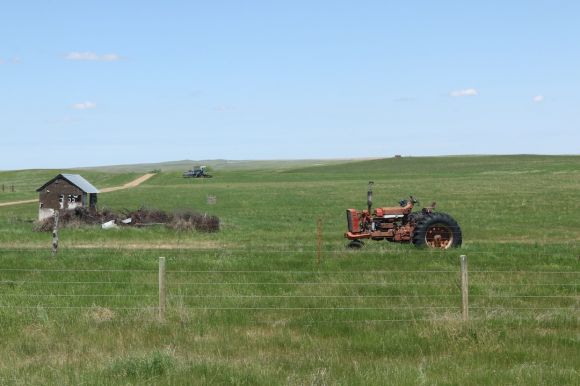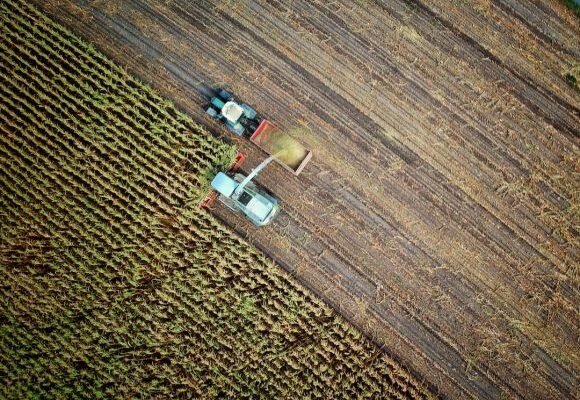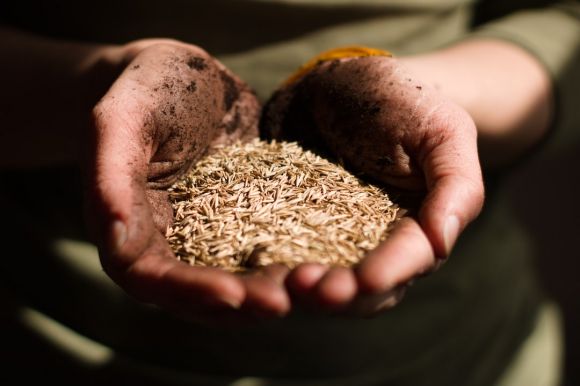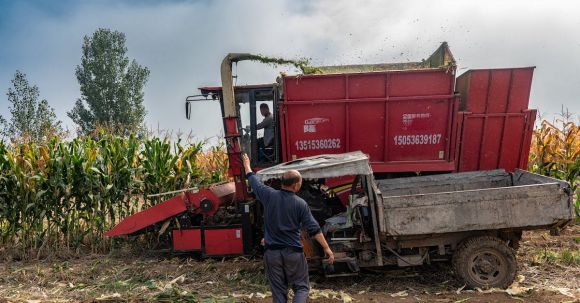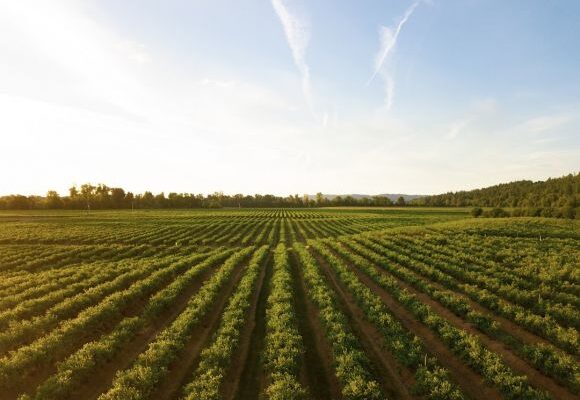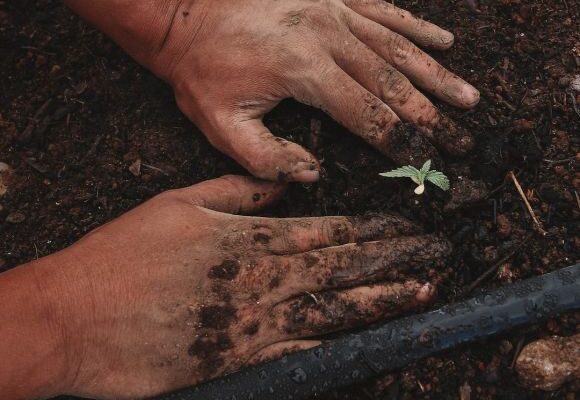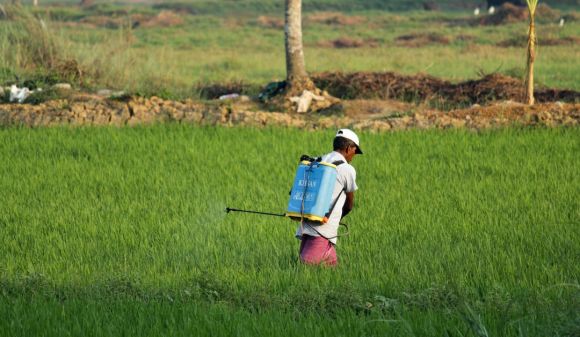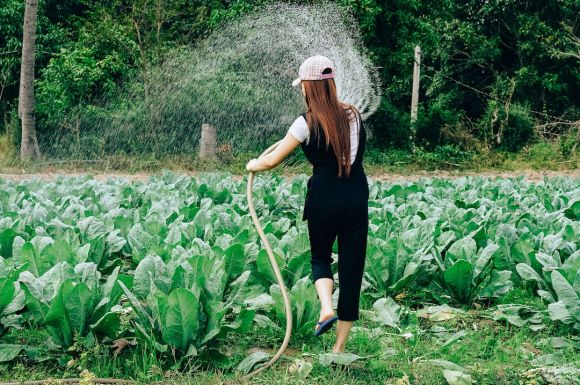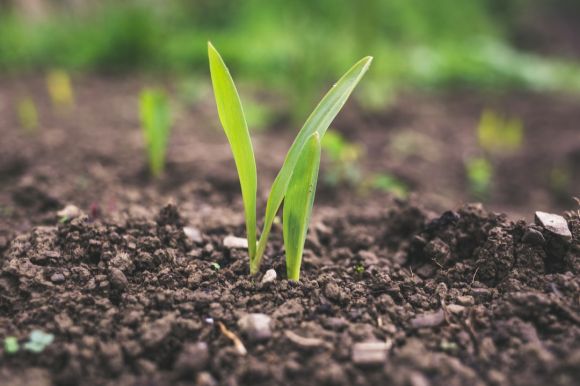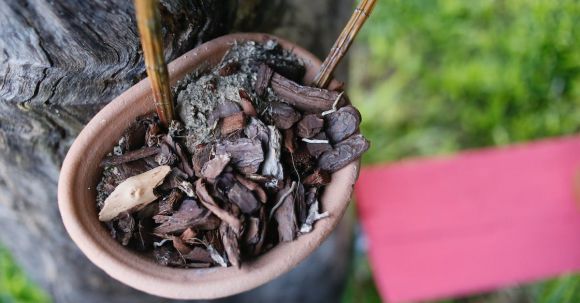Climate change is an undeniable reality that has significant implications for agriculture. As the world experiences more extreme weather events, farmers must find innovative ways to protect their crops from the adverse effects of these changes. In this article, we will explore some strategies that can help farmers weatherproof their crops and ensure a reliable food supply for future generations. Diversify Your Crops One of the most effective ways to weatherproof your crops is to diversify your planting. By growing a variety of crops, you can mitigate the risks associated with climate change. Different crops have different tolerances to temperature, rainfall, and pests, so by diversifying, you increase the likelihood of having a successful harvest even if one crop fails. Furthermore, diverse crops promote biodiversity, which can lead to a more resilient ecosystem. Adapt Crop Varieties Another strategy to weatherproof your crops is to choose crop varieties that are better adapted to changing climatic conditions. Traditional crop varieties may not be suitable for the new climate reality, so it is important to select varieties that have traits like drought tolerance, disease resistance, and heat resistance. Plant breeders are constantly developing new varieties that are better suited to the changing climate, … Read More
Crop Management Solutions
As farmers, one of the biggest challenges we face is protecting our crops from pests and diseases. These threats can significantly reduce yields and quality, leading to economic losses. However, by implementing effective crop protection strategies, we can mitigate the damage caused by pests and diseases and ensure a successful harvest. In this article, we will explore some key strategies that can help us achieve this goal. Understanding the Enemy: Pest and Disease Identification The first step in developing a crop protection strategy is to identify the specific pests and diseases that pose a threat to our crops. By understanding the characteristics and life cycles of these pests and diseases, we can determine the most appropriate methods of control. Regular scouting of fields and monitoring of crop health can help us detect early signs of infestation or disease, allowing for timely intervention. Cultural Practices: Create an Unfavorable Environment for Pests and Diseases Creating an unfavorable environment for pests and diseases is crucial in reducing their impact on crops. This can be achieved through various cultural practices such as crop rotation, intercropping, and proper sanitation. Crop rotation breaks the cycle of pests and diseases by planting different crops in a sequential … Read More
Water is essential for the growth and development of crops, but excessive water can have detrimental effects. Waterlogging, also known as soil saturation, occurs when the soil becomes oversaturated with water, leading to poor root development and decreased crop productivity. In order to prevent waterlogging and ensure efficient soil drainage, farmers must implement proper management techniques. This article will explore the importance of efficient soil drainage and provide practical tips for preventing waterlogging in crops. Understanding Soil Drainage Soil drainage refers to how well water moves through the soil. It is determined by various factors such as soil texture, structure, and organic matter content. Well-drained soil allows excess water to drain away, preventing waterlogging. On the other hand, poorly drained soil retains water, leading to waterlogging and oxygen deprivation for the roots. The Consequences of Waterlogging Waterlogging can have severe consequences on crop health and productivity. When soil becomes waterlogged, it hinders root respiration, nutrient uptake, and microbial activity. This can result in stunted growth, yellowing of leaves, and even plant death. Furthermore, waterlogged soil increases the risk of diseases caused by waterborne pathogens, such as root rot and fungal infections. Ultimately, waterlogging can lead to significant yield losses and … Read More
Crop reproductive success is a crucial factor in achieving higher yields. By understanding the reproductive processes of plants and implementing effective strategies, farmers can optimize the production of crops. This article explores various techniques and approaches to enhance crop reproductive success, leading to improved yields. Understanding Plant Reproduction Before delving into strategies for enhancing crop reproductive success, it is essential to understand the basics of plant reproduction. Plants reproduce through either self-pollination or cross-pollination. Self-pollination occurs when pollen from the same plant fertilizes its own ovules, while cross-pollination involves the transfer of pollen from one plant to another. Selecting the Right Varieties Choosing the right crop varieties is a fundamental step in enhancing reproductive success. Opt for varieties that are known for their strong reproductive traits, such as high flower production, good pollen viability, and effective pollen dispersal. Additionally, consider selecting varieties that are adapted to the local climate and soil conditions, as this will further improve reproductive success. Providing Optimal Growing Conditions Creating ideal growing conditions is vital for promoting crop reproductive success. Ensure that crops receive sufficient sunlight, water, and nutrients throughout their growth cycle. Adequate irrigation practices and proper fertilization techniques can significantly enhance the reproductive capacity … Read More
Pesticides have long been used as a means to control pests and protect crops. However, the over-reliance on these chemicals has led to environmental and health concerns. In recent years, there has been a growing interest in adopting sustainable pest management techniques that aim to reduce pesticide usage while still effectively managing pests. These techniques focus on prevention, monitoring, and the use of natural alternatives. In this article, we will explore some of the sustainable pest management techniques that can help reduce pesticide usage. Prevention is Key One of the fundamental principles of sustainable pest management is prevention. By implementing preventive measures, farmers can minimize the need for pesticides. This involves maintaining healthy and diverse ecosystems, practicing crop rotation, and using resistant crop varieties. By creating an environment that is less favorable for pests, farmers can reduce the chances of an infestation and the need for chemical intervention. Monitoring and Early Detection Regular monitoring and early detection are crucial in sustainable pest management. By closely monitoring the crops, farmers can identify pest populations before they reach damaging levels. This allows for targeted interventions, such as the use of biological control agents or physical barriers, to prevent the need for widespread … Read More
Weeds are a common problem in crop production, as they compete with crops for sunlight, nutrients, and water. If left uncontrolled, weeds can significantly reduce crop yields and quality. Therefore, effective weed management is essential to prevent competition in crops and ensure optimal growth and productivity. In this article, we will discuss some strategies and techniques for effective weed management. Understanding Weed Biology To effectively manage weeds, it is crucial to understand their biology and life cycle. Weeds can be annuals, biennials, or perennials, and they reproduce through seeds or vegetative propagation. By understanding the specific characteristics and growth habits of weeds, farmers can develop targeted weed management strategies. Preventing Weed Establishment Preventing weed establishment is the first line of defense against weed competition. This can be achieved through various practices, such as proper crop rotation and sanitation. Crop rotation helps break the weed life cycle by interrupting weed seed germination and reducing the buildup of weed populations. Sanitation involves eliminating weed seeds and plant materials from the field, preventing the spread of weeds. Cultural Weed Management Practices Cultural practices can play a significant role in weed management. These practices include timely planting, maintaining optimal plant densities, and providing adequate … Read More
Weeds are unwanted plants that compete with crops for resources such as nutrients, water, and sunlight. If left uncontrolled, weeds can reduce crop yields and quality. Implementing effective weed prevention techniques is essential to minimize competition in crops and ensure optimal growth and productivity. In this article, we will explore some practical strategies that farmers can employ to combat weeds and protect their crops. 1. Mulching Mulching is a technique that involves covering the soil around crops with a layer of organic or synthetic material. This layer acts as a physical barrier, preventing weed seeds from germinating and reaching the sunlight they need to grow. Mulching also helps retain soil moisture, reduce erosion, and regulate soil temperature. Organic mulches, such as straw or wood chips, can also provide additional nutrients to the soil as they decompose. 2. Crop Rotation Crop rotation is a practice where different crops are grown in sequence on the same piece of land. This technique disrupts the lifecycle of weeds by altering the conditions they need to thrive. Different crops have different nutrient requirements and growth patterns, making it difficult for weeds to adapt and establish themselves. Additionally, certain crops, such as legumes, have the ability … Read More
The importance of soil health in the success of crop growth cannot be overlooked. Healthy soil is the foundation for healthy plants, and ultimately, a thriving agricultural system. In this article, we will explore the key factors involved in managing soil health and how they contribute to the overall productivity and sustainability of crop production. Understanding Soil Health Soil health refers to the ability of the soil to function as a living ecosystem that supports plant growth. It is not just about the physical properties of the soil, but also its biological and chemical components. A healthy soil is teeming with beneficial organisms, such as earthworms and bacteria, which help to break down organic matter and release essential nutrients for plants. Additionally, a well-balanced soil pH and nutrient content are crucial for optimal crop growth. Soil Testing and Analysis One of the first steps in managing soil health is conducting a soil test. This involves taking samples from different areas of the field and analyzing them for nutrient content, pH levels, and organic matter. Soil testing provides valuable information about the current state of the soil and helps determine the specific nutrient requirements of the crops. Based on the results, … Read More
In the face of growing global population and increasing food demand, ensuring the protection of crops has become a top priority for farmers around the world. However, the excessive use of chemical pesticides has led to numerous environmental and health concerns. In this context, Integrated Pest Management (IPM) has emerged as a sustainable approach to crop protection. By combining various strategies and techniques, IPM offers a holistic and environmentally friendly solution to manage pest populations effectively. Understanding Integrated Pest Management Integrated Pest Management is an agricultural practice that focuses on long-term pest management through the integration of multiple techniques. The goal of IPM is to minimize the use of chemical pesticides while maintaining crop health and productivity. This approach emphasizes prevention, monitoring, and control, taking into account the ecological interactions between pests, crops, and their environment. Prevention: The First Line of Defense Prevention is the foundation of IPM. By implementing preventive measures, such as crop rotation, the use of resistant crop varieties, and the enhancement of soil health, farmers can reduce the likelihood of pest infestations. These proactive steps disrupt pest life cycles and create an unfavorable environment for their development, minimizing the need for intervention. Monitoring: Early Detection is … Read More
Introduction In order to maximize crop yields and improve the overall health and productivity of plants, it is essential to ensure effective nutrient uptake. Nutrient uptake refers to the process by which plants absorb essential elements from the soil and incorporate them into their tissues. This article will discuss some effective strategies for enhancing crop nutrient uptake, thereby optimizing plant growth and productivity. Soil Testing and Nutrient Analysis Before implementing any nutrient management strategy, it is crucial to conduct a thorough soil test and nutrient analysis. This will help identify any nutrient deficiencies or imbalances that may be limiting crop growth. By understanding the unique nutrient requirements of a particular crop and the soil conditions, farmers can tailor their nutrient management practices accordingly. Balanced Fertilization One of the most effective ways to enhance crop nutrient uptake is through balanced fertilization. This involves providing crops with a combination of macronutrients (nitrogen, phosphorus, and potassium) and micronutrients (such as iron, zinc, and manganese) in the right proportions. By ensuring that all essential nutrients are available to the plants, balanced fertilization promotes healthy root development and improves nutrient uptake. Optimizing pH Levels The pH level of the soil plays a crucial role in … Read More
Introduction Plant diseases are a significant threat to global food security, causing massive yield losses each year. The constant evolution of pathogen populations and the increasing frequency of new disease outbreaks pose challenges to crop production. To combat this, farmers and researchers are constantly seeking strategies to improve crop resistance and manage plant diseases effectively. In this article, we will explore some of the most promising strategies for managing plant diseases and enhancing crop resistance. Breeding for Resistance Breeding for resistance is a fundamental strategy in managing plant diseases. This approach involves selecting and cultivating crop varieties that are naturally resistant to specific diseases. By identifying and breeding resistant cultivars, farmers can reduce their reliance on chemical pesticides and minimize the impact of diseases on crop yields. Additionally, breeding for resistance can help to promote genetic diversity within crop populations, making them more resilient to future disease pressures. Crop Rotation Crop rotation is a time-tested technique that can help manage plant diseases. By rotating crops, farmers can disrupt the life cycle of pathogens and reduce disease pressure over time. Different crops have different disease susceptibilities, so rotating crops can help break disease cycles and prevent the buildup of pathogen populations … Read More
Agriculture plays a crucial role in feeding the world's growing population. As the demand for food continues to rise, farmers are constantly seeking ways to increase their crop yields and maximize productivity. Fortunately, advancements in technology and innovative farming practices have paved the way for effective crop management solutions. In this article, we will explore some of these solutions and how they can help farmers maximize their agricultural productivity. 1. Precision Farming: A Game-Changer in Crop Management Precision farming is revolutionizing agriculture by allowing farmers to make data-driven decisions. This technology involves the use of sensors, drones, and GPS systems to collect real-time data about soil conditions, temperature, humidity, and crop growth. By analyzing this data, farmers can identify specific areas of their fields that require attention, such as nutrient deficiencies or pest infestations. This targeted approach enables them to apply fertilizers, pesticides, and water only where needed, reducing waste and optimizing crop growth. 2. Integrated Pest Management: A Sustainable Approach Pests pose a significant threat to crop productivity, causing billions of dollars in losses each year. Integrated Pest Management (IPM) is an eco-friendly approach that combines various strategies to control pests effectively. These strategies include biological controls, such as … Read More
The world's population continues to grow at an unprecedented rate, and with it comes an increasing demand for food. As a result, farmers and agricultural experts are constantly seeking new ways to optimize crop growth and maximize yields. In this article, we will explore some effective solutions that can help improve agricultural practices and ensure food security for the future. Soil Management: The Foundation for Successful Crop Growth One of the most crucial factors in optimizing crop growth is proper soil management. Healthy soil provides the essential nutrients, water, and oxygen that plants need to thrive. Implementing practices such as crop rotation, cover cropping, and organic matter addition can improve soil fertility and structure, promoting optimal plant growth. Precision Agriculture: Harnessing Technology for Better Results Advancements in technology have revolutionized the agricultural industry, giving rise to the concept of precision agriculture. By utilizing tools like GPS, remote sensing, and data analytics, farmers can make informed decisions about crop management. This includes precise application of fertilizers and pesticides, optimizing irrigation, and monitoring plant health, resulting in higher yields and reduced environmental impact. Crop Diversification: Enhancing Resilience and Sustainability Monocropping, or growing a single crop on a large scale, can leave crops … Read More
In the world of agriculture, crop performance is a crucial factor for farmers. The success of their harvest can depend on various factors, such as soil quality, weather conditions, and pest control. To ensure optimal crop performance, farmers need to employ expert solutions that are tailored to their specific needs. In this article, we will explore some of these solutions and how they can help farmers maximize their crop performance. Improving Soil Quality: The Foundation of Crop Performance The health of the soil is essential for crop growth and productivity. Farmers can improve soil quality by implementing various practices, such as crop rotation, cover cropping, and organic matter management. Crop rotation involves alternating the type of crops grown in a particular field over a period of time. This practice helps prevent the buildup of pests and diseases, improves soil fertility, and reduces the need for chemical inputs. Cover cropping is another effective technique for improving soil quality. It involves planting specific crops, known as cover crops, during the off-season or alongside cash crops. Cover crops help reduce soil erosion, enhance nutrient availability, and suppress weeds. Moreover, when cover crops are incorporated into the soil, they increase organic matter content, which … Read More
Agriculture plays a vital role in providing food for the growing global population. However, the success of crop production is often threatened by pests. These tiny creatures can cause significant damage to crops if not effectively managed. In this article, we will explore some effective strategies for pest management to protect our valuable crops. Understanding Pest Behavior To effectively manage pests, it is crucial to understand their behavior and life cycles. Different pests have different preferences in terms of host plants, breeding grounds, and feeding habits. By studying their behavior, farmers can identify the most vulnerable stages of a pest's life cycle and implement targeted control measures. Crop Rotation Crop rotation is a widely used practice in pest management. By rotating crops, farmers can disrupt the life cycles of pests that are specific to certain plants. For example, if a field is infested with a pest that primarily attacks tomatoes, planting a different crop, such as corn or beans, in the following season can help break the pest's life cycle and reduce its population. Biological Control Biological control is an environmentally friendly approach to pest management. It involves using natural enemies of pests to control their populations. For example, ladybugs … Read More
Water is a precious resource, especially when it comes to agriculture. Proper irrigation is crucial for the healthy growth and development of crops. However, water scarcity and increasing water costs have made it necessary for farmers to optimize their irrigation practices. By adopting efficient water management techniques, farmers can ensure the sustainability of their crops while conserving water resources. In this article, we will explore some strategies for irrigation optimization that can help farmers achieve better results. Understanding Crop Water Needs One of the first steps in optimizing irrigation is to understand the water needs of different crops. Each crop has specific requirements, and over or under-irrigation can have detrimental effects on their growth. By studying the crop's water requirements at different stages of growth, farmers can determine the ideal amount of water needed for irrigation. This knowledge can help them avoid overwatering or underwatering their crops, leading to improved yields and reduced water wastage. Monitoring Soil Moisture Another essential aspect of irrigation optimization is monitoring soil moisture. By regularly checking the moisture levels in the soil, farmers can ensure that their crops are receiving adequate water without wastage. There are various methods available for measuring soil moisture, including soil … Read More
Pollination plays a crucial role in the production of crops, ensuring the transfer of pollen from the male parts to the female parts of plants. This process is essential for the formation of fruits and seeds. However, with the decline in natural pollinators such as bees and butterflies, it has become necessary for farmers to employ techniques to boost crop pollination. In this article, we will explore some effective methods that can be used to increase crop yield through enhanced pollination. 1. Attracting Native Pollinators One of the most sustainable and environmentally friendly ways to boost crop pollination is by attracting native pollinators to the farm. Native bees, for example, are highly efficient pollinators and can significantly increase crop yield. To attract these beneficial insects, farmers can create pollinator-friendly habitats on their land. This can be done by planting native wildflowers, providing nesting sites such as bee hotels, and reducing the use of pesticides that are harmful to pollinators. 2. Introducing Managed Honeybees In addition to native pollinators, managed honeybees can also be introduced to increase crop pollination. Honeybees are highly effective at pollinating a wide range of crops and can significantly boost yield. Farmers can rent or purchase beehives … Read More
Farming practices have evolved over the years, with farmers and researchers constantly seeking ways to improve soil health and increase crop yield. One approach that has gained significant attention is the integration of cover crops into agricultural systems. Cover crops are plants that are grown specifically to protect and enhance the soil, rather than for harvest. In this article, we will explore the benefits of integrating cover crops and how they contribute to soil health and crop yield. Enhancing Soil Health One of the primary benefits of cover crops is their ability to improve soil health. When cover crops are grown, they help prevent soil erosion by reducing the impact of wind and water. Their dense root systems hold the soil together, preventing it from being washed away or blown off. This is especially important in areas prone to erosion, such as sloping fields or regions with heavy rainfall. Cover crops also play a crucial role in reducing soil compaction. The roots of cover crops penetrate deep into the soil, creating channels for water and air to circulate. This improves soil structure, making it easier for roots of cash crops to grow and access nutrients and water. Additionally, cover crops … Read More
Pollination plays a crucial role in the production of crops, ensuring the transfer of pollen from the male reproductive organs of a flower to the female reproductive organs. This process leads to fertilization and the formation of seeds, ultimately resulting in the production of fruits and vegetables. However, with declining populations of pollinators like bees and butterflies, there is a need to find solutions for better crop pollination to ensure optimal yields. In this article, we will explore some effective strategies to improve crop pollination and maximize agricultural productivity. 1. Enhancing Habitat for Pollinators Creating a conducive environment for pollinators is vital for successful crop pollination. Planting diverse flowering plants and maintaining a variety of habitats can attract and support a wide range of pollinators. Incorporating native wildflowers, herbs, and shrubs in and around crop fields provides additional food sources and nesting sites for pollinators. Additionally, minimizing the use of pesticides and adopting organic farming practices can help protect pollinators from harmful chemicals. 2. Providing Nesting Sites Many pollinators, such as solitary bees and butterflies, require suitable nesting sites to lay their eggs and continue their life cycle. By installing artificial nesting structures like bee hotels and butterfly houses, farmers … Read More
Soil structure plays a crucial role in determining the health and productivity of crops. A well-structured soil provides a favorable environment for root development, nutrient uptake, and water infiltration. On the other hand, compacted or poorly structured soil can hinder these processes, leading to reduced crop yields. In this article, we will explore some effective solutions for improving soil structure and promoting healthy crop growth. Understanding Soil Structure Before delving into the solutions, let's first understand what soil structure is. Soil structure refers to the way individual soil particles are arranged and held together. It is influenced by various factors, including the type of soil, organic matter content, and management practices. Healthy soil structure is characterized by well-formed aggregates, which allow for proper aeration, water movement, and root penetration. 1. Organic Matter Management One of the most effective ways to improve soil structure is through proper organic matter management. Organic matter, such as compost or well-rotted manure, helps to bind soil particles together, creating stable aggregates. It also enhances the soil's ability to hold moisture and nutrients. Regularly incorporating organic matter into the soil can greatly improve its structure over time. 2. Avoiding Over-Tillage Excessive tillage can disrupt soil structure … Read More


